(1) "Pacman Anhydrite"
The paradigm that thick anhydrite sections can not form in tidal flat settings because of hydrologic constraints rests on the assumption that most of the evaporites there are displacive in origin. But, what if their formation was not purely displacive and developed through the consumption of precursor carbonate ("pacman anhydrite" name proposed by K. Leyrer 2001) instead?
Our research suggests there is considerable evidence for "pacman anhydrite" (see figures) and that when the consumption of anhydrite reaches completion, only massive anhydrite devoid of internal structure remains. Typically, such anhydrite and even massive 'chickenwire anhydrite' are interpreted to represent strongly coalesced nodules whose origin resides in subaqueous gypsum growth even in the absence of evidence for some vertically elongated nodules. Observed gypsum to anhydrite transformation models show that primary gypsum crystal fabrics have at least some influence on anhydrite nodule shape and orientation. We contend that some inclined and vertical elongated nodules should be preserved in 'chickenwire anhydrite' if it has a subaqueous origin. In the absence of such evidence, we contend that thick beds of 'chickenwire anhydrite' may be purely diagenetic structures attributable to "pacman anhydrite" processes. Such an interpretation would be consistent with not only with the generally equant anhydrite structures present, absence of displacive fabrics, and dearth of carbonate.
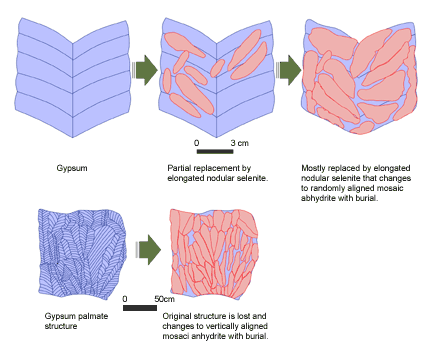
Subaqueous gypsum to anhydrite transformation model adopted from Loucks and Longman (1982)
Why is this important? Sequence stratigraphic models very much depend on the correct interpretation of a depositional model. For example, one stratigrapher considers the evaporites as salina deposits formed during a lowstand, whereas a second worker may assign a tidal flat origin and include them in the highstand systems tract. In the first interpretation, the sequence boundary occurs at the base of the evaporites and the deposits delineate an intrashelf basin. The sequence boundary occurs at the top of the evaporites in the second model and the evaporites define a progradational wedge. Correlation frameworks will differ fundamentally and this has profound impact on reservoir characterization or play concept development.
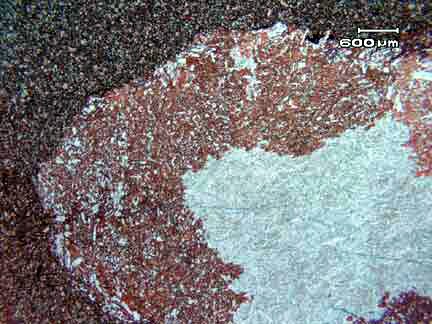
Figure 1 — Felted "pacman" anhydrite exhibit carbonate rim (stained for calcite) partially replaced by anhydrite laths.
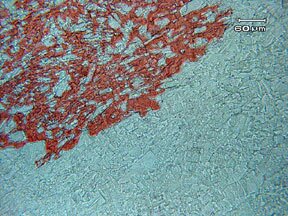 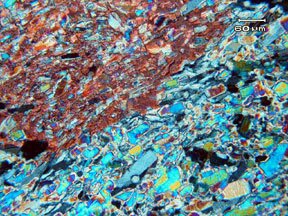
Figures 1a and 1b show details of attacked carbonate rim in plane-polarized (figure 1a) and plane cross-polarized (Figure 1b) transmitted light.
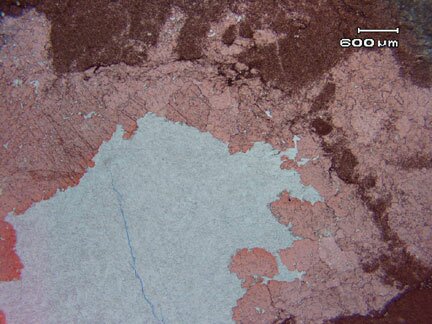
Figure 2 — Mudstone with coarsely crystalline carbonate rim developed around felted "pacman" anhydrite. Note white areas (anhydrite) within carbonate rim and corroded carbonate crystal margins adjacent to anhydrite core. Plane-polarized transmitted light.
|



